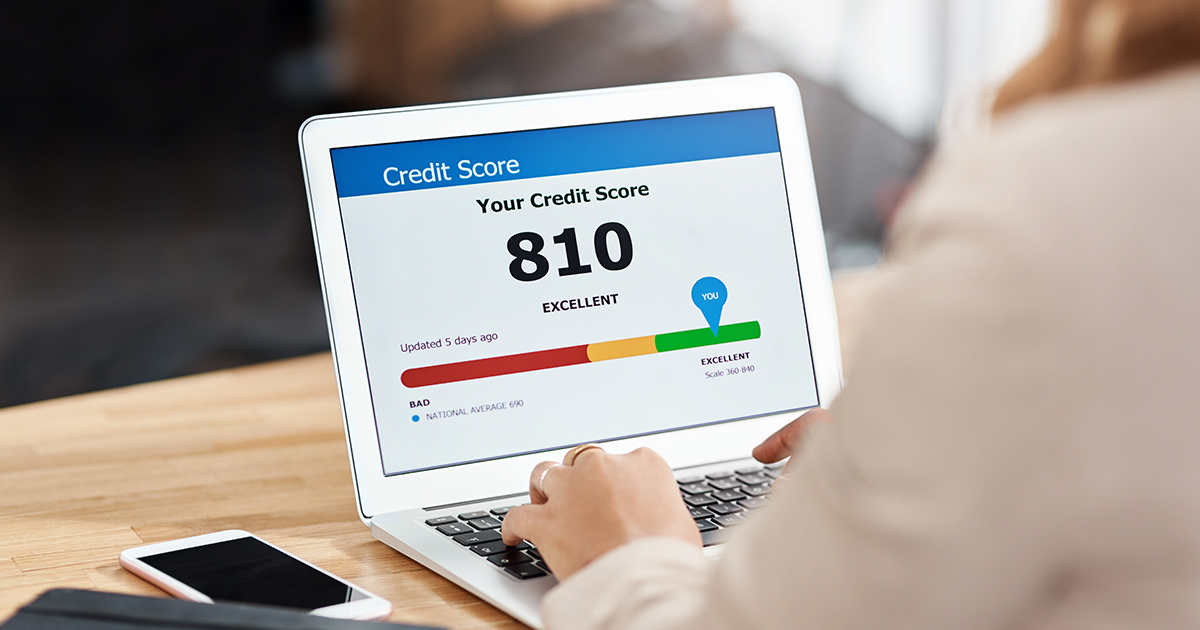Buying on credit is a way of life for most Americans: 70% of us carry a credit card, and one-third have three or more cards in their wallets. While the debt looks a bit different, 65% of Americans are homeowners, and of those, almost 63% have a mortgage. No doubt, “buy now, pay later” could be on the ‘Welcome to the United States’ signs (although it’s not very poetic).
Despite all this shopping on credit, many people know they have a ‘credit score’ but don’t know much about it. Most of the time it doesn’t even cross our minds…until you go to buy a car or a home and then that number matters a lot.
While there are lots of tips and tricks for improving your credit score, it can be hard to know where to start, so here are three things you can do today to get financially fit and start shaping up your credit score.
Step 1: Understand your credit score
You can read all the details of what a credit score is here, but most important is understanding how your credit score is calculated. This number, which ranges between 300 – 850 on the FICO® Score and VantageScore models, is made up of your:
- Payment history (35%) – Do you pay your bills on time?
- Credit usage (30%) – Of the credit you have available, how much are you using?
- Age of credit accounts (15%) – Do you have a track record of paying your bills?
- Credit mix (10%) – Have you paid on both revolving (e.g., credit cards) and installment (e.g., student loans or car payments) credit?
- New credit inquiries (10%) – How often do you apply for new loans or credit cards?
Once you know how your credit score breaks down, you’re ready to look at your credit report.
Step 2: Review your credit report
You can request a credit report once a year from each of the three agencies (Experian™, Equifax® and TransUnion®) either directly or through AnnualCreditReport.com. (Right now through April 2021, you can actually request one weekly.) The report will show you:
- Businesses with which you have credit or a loan (like a store credit card or car loan through a dealership or auto manufacturer)
- How much you owe, your credit limits, how much you’ve paid and whether you’ve paid on time
- Businesses that have checked your credit in the last 12 months
- Other information like current and former names, addresses and employers
First, make sure all the information looks correct. Frequent reviews can help you spot errors, and any red flags, like someone else taking out credit cards or loans in your name. Then check it against the percentages in Step 1. Your credit report will not tell you your credit score, and you’ll have to pay to see what your score is (usually $4.95 to $9.95). Your score can also vary from agency to agency. However, based on the details in your credit report, you can still make changes to improve your credit score.
Step 3: Make a plan
Improving your credit score can take time, but there are things you can do quickly that can start having an impact.
- If there is any incorrect information on your credit report, contact that reporting agency to get it fixed.
- If a business made a credit inquiry that you didn’t approve or initiate, you can request to have it removed, which can help your score a little (it’s only 10% of the total, but it counts!).
- Get up to date on any missing payments. Paying bills late has the biggest impact on your credit (it’s 35% of your score), so focus on paying your bills on time every month to show creditors you are reliable.
Then, make sure you don’t have too much debt. For your credit score, you want to be using less than 30% of what’s available to you (your total credit limit), but from a personal finance standpoint, you want to be sure you aren’t overstretched and can pay your bills every month. Read more here about how to deal with debt.
While managing your credit isn’t anyone’s idea of a fun Friday night, getting it in tip-top shape can have a huge impact on your future. It can ensure you are financially fit and have the means to do the things you want, whether that’s buy a home, travel to exotic destinations or even retire early. Starting with these three steps can put you on the path toward achieving your financial goals.






 Federally Insured by NCUA |
Federally Insured by NCUA |  Equal Housing Opportunity |
Equal Housing Opportunity |